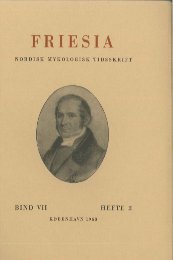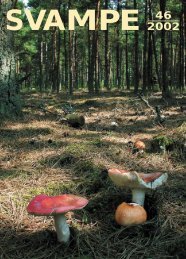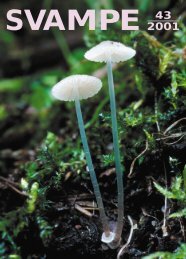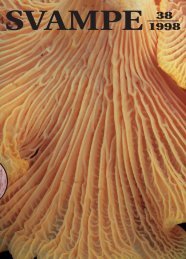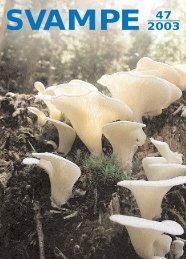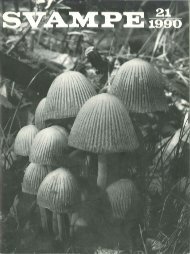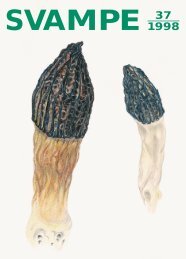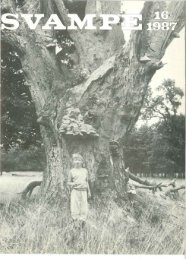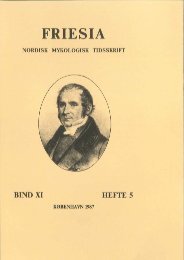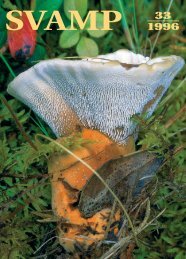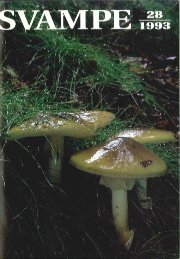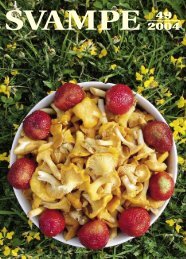Friesia X, 4-5
Friesia X, 4-5
Friesia X, 4-5
Create successful ePaper yourself
Turn your PDF publications into a flip-book with our unique Google optimized e-Paper software.
- 275 -<br />
Fig. 2. The burnt area at Holsteinsborg, lying centrally in the middleground<br />
and characterized by the light coloured boulders.<br />
months after burning. The vegetation of dwarf shrub heath and low<br />
growing Salix glauca had been killed and the humus layer scorehed<br />
and locally totally combusted. The only fungi found were an Octo<br />
spora sp. and Pholiota carbonaria.<br />
2. Burnt area 4 km northeast of Holsteinsborg. An approximately<br />
rectangular area on a south facing slope, ca. 7 ha (Fig. 2). Burned<br />
8.-10. July 1971, visited 27. August 1972, 14 months after burning.<br />
Previous to the fire, the area had been covered with Salix glaucascrub,<br />
0.5 m high, with a field layer of herbs; particularly on the<br />
upper part of the slope Salix glauca was mixed with Betula nana and<br />
a few Juniperus communis ssp. nana. The lower eastern part of the<br />
area had been covered with a dry Empetrum hermaphroditum-heath,<br />
rich in lichens.<br />
The fire must have been intense. The abcve-ground parts of the<br />
willows were dea d, but at the time of the visit, new shoots were<br />
developing from the below-ground parts. The litter layer had been<br />
combusted and the humus layer was scorehed. Here and there even<br />
the humus layer had burned, resulting in the formation of hollows<br />
with an ash layer, of a few cm thickness. This was especially the<br />
case where the humus layer had covered stones and rocks (Fig. 3).<br />
In order to provide some insight into the edaphic conditions, pH<br />
was measured in a number of fresh samples. The samples were<br />
18*



